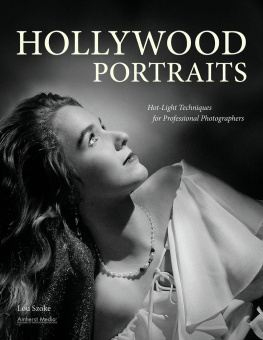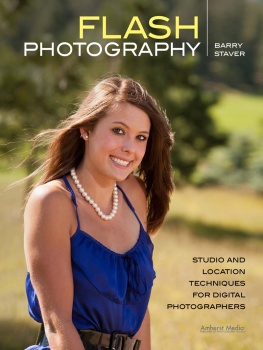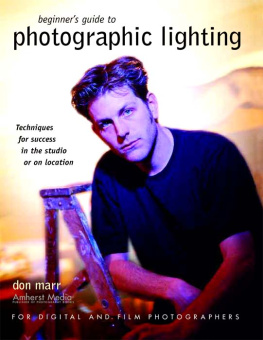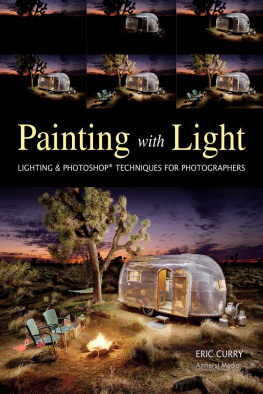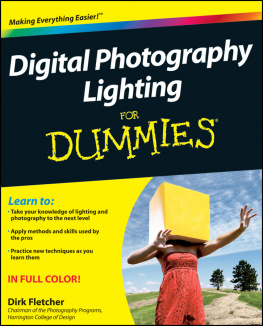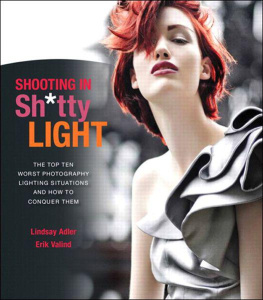Light
Science & Magic
Fourth Edition
An Introduction to Photographic Lighting A {
Fil Hunter Steven Biver Paul Fuqua
LightScience & Magic
Fourth Edition
Light Science & Magic
An Introduction to Photographic Lighting
Fourth Edition Fil Hunter Steven Biver Paul Fuqua
Amsterdam Boston Heidelberg London New York Oxford Paris San Diego San Francisco Singapore Sydney Tokyo
Focal
Press
ELSEVIER
Focal Press is an imprint of Elsevier
Focal Press is an imprint of Elsevier
225 Wyman Street, Waltham, MA 02451, USA
The Boulevard, Langford Lane, Kidlington, Oxford, OX5 1GB, UK
2012 Fil Hunter, Steven Biver, and Paul Fuqua. Published by Elsevier, Inc. All rights reserved.
No part of this publication may be reproduced or transmitted in any form or by any means, electronic or mechanical, including photocopying, recording, or any information storage and retrieval system, without permission in writing from the publisher. Details on how to seek permission, further information about the Publishers permissions policies and our arrangements with organizations such as the Copyright Clearance Center and the Copyright Licensing Agency, can be found at our website: www.elsevier . com/permissions .
This book and the individual contributions contained in it are protected under copyright by the Publisher (other than as may be noted herein).
Notices
Knowledge and best practice in this field are constantly changing. As new research and experience broaden our understanding, changes in research methods, professional practices, or medical treatment may become necessary.
Practitioners and researchers must always rely on their own experience and knowledge in evaluating and using any information, methods, compounds, or experiments described herein. In using such information or methods they should be mindful of their own safety and the safety of others, including parties for whom they have a professional responsibility.
To the fullest extent of the law, neither the Publisher nor the authors, contributors, or editors, assume any liability for any injury and/or damage to persons or property as a matter of products liability, negligence or otherwise, or from any use or operation of any methods, products, instructions, or ideas contained in the material herein.
Library of Congress Cataloging-in-Publication Data
Hunter, Fil.
Lightscience & magic / Fil Hunter, Steven Biver, and Paul Fuqua. 4th ed. p. cm.
ISBN 978-0-240-81225-0
1. PhotographyLighting. I. Fuqua, Paul. II. Biver, Steven. III. Title.
TR590.H84 2011 778.7'2dc23
2011018511
British Library Cataloguing-in-Publication Data
A catalogue record for this book is available from the British Library.
For information on all Focal Press publications visit our website at www.elsevierdirect.com
12 13 14 15 16 5 4 3 2 1 Printed in China
Typesetby: diacriTech, Chennai, India
Working together to grow libraries in developing countries
www.elsevier.com ] www.bookaid.org | www.sabre.org
ELSEVIER Sabre Foundation
Introduction
It gives us, your authors, great pleasure to welcome you to this new edition. We would also like to thank you for all the support you have shown for LightScience & Magic over the past near quarter of a century. We sincerely appreciate it.
Since our previous edition, the photographer's worldand everybody else'shas changed radically. Long established markets, relationships, and business models have shrunk, if not completely collapsed. Once valued skill sets have been rendered useless, and the fees clients are willing to pay have been reduced in every market sector. All in all, its fair to say that not all things are rosy in today's stressed-out image-making world.
There is, however, also a gooda very goodside to things. While it is true that on the one hand we photographers may be challenged as perhaps never before, it is also true that over the past several years manufacturers have swamped us with a seemingly endless flood of truly amazing gear. New generations of cameras, lighting gear, high-resolution printers, and sophisticated software have revolutionized how we work and how we think.
Today, it is commonplace for us to do that of which we could not even dream those few years ago when the previous edition of this book rolled off the presses. And so it goes. In some ways we are worse off than we once were. In others, we are better off.
And then there is light the collective result of all those busy little photons that buzz around the universe as they have since its creation. Light is everything for us. Light is, always has been, and always will be the very foundation of that amazing amalgamation of art and science we call photography. And now, thanks to your continued support, there is this, the newest edition of LightScience & Magic. Our greatest hope for it is that it will, like earlier editions, help students to understand how light behaves, and always will. Armed with these timeless principles, one is ready to do battleand thoroughly enjoy itin this new and crazy world of picture making.
How to Learn Lighting
LightScience & Magic is a discussion, not a lecture. You bring to this discussion your own opinions about art, beauty, and aesthetics. We do not intend to change those opinions and may not even influence them very much. We will be more bored than flattered if reading this book causes you to make pictures that look like ours. For better or worse, you have to build your own pictures on your own vision.
What we do have to offer you is a set of tools. This book is about technology. Science. Brass tacks. It is information for you to use when you please, if you please, and how you please. This does not, however, mean that this book is not about ideas, because it is. The basic tools of lighting are principles, not hardware. Shakespeare's tool was the Elizabethan English language, not a quill pen. A photographer without mastery of lighting is like a Shakespeare who could speak only the language of the people in the Globe Theatre pit. Being Shakespeare, he still might have come up with a decent play, but it certainly would have taken a lot more work and, very likely, more blind luck than most people are entitled to expect.
Lighting is the language of photography. Patterns of light convey information just as surely as spoken words. The information that light conveys is clear and specific. It includes definite statements, such as The bark of this tree is rough or This utensil is made of stainless steel, but that one is sterling.
Lighting, like any other language, has a grammar and a vocabulary. Good photographers need to learn that grammar and vocabulary. Fortunately, photographic lighting is a lot easier to master than a foreign language. This is because physics, not social whim, makes the rules.
The tools we have included in this book are the grammar and vocabulary of light. Whatever we say about specific technique is important only to the extent that it proves the principles. Please, do not memorize the lighting diagrams in this book. It is entirely possible to put a light in exactly the same spot shown in the diagram and still make a bad pictureespecially if the subject is not identical to the one in the diagram. But if you learn the principle, you may see several other good ways to light the same subject that we never mention and maybe never thought of.
Next page

